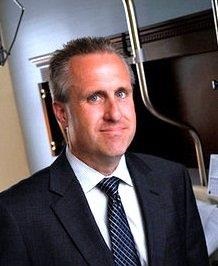 The ultimate goal of IT is to support and improve essential healthcare functions, but the road to achieving that objective is bumpy. Clinicians struggle with clunky technology and interrupted workflows, but this is changing.
The ultimate goal of IT is to support and improve essential healthcare functions, but the road to achieving that objective is bumpy. Clinicians struggle with clunky technology and interrupted workflows, but this is changing.
Ed Ricks, CIO and vice president of information services at Beaufort (S.C.) Memorial Hospital, shares five thoughts on understanding and improving the clinician's IT experience.
Please note responses have been lightly edited for clarity and concision.
Question: How does health IT affect clinicians on a day-to-day basis?
Ed Ricks: Outdated technology can complicate a clinician's workflows and waste time and money. We found that average clinicians require between 6 and 8 passwords to log in to their workstations and applications, and the average clinician wastes 45 minutes per day due to outdated communication technologies. Clinicians want to access data at work the same way they access data in every other part of their lives — quickly and easily. They also want to be able to use their own mobile devices to access applications and communicate with other clinicians through text messaging. A solid health IT infrastructure can create efficiencies, save time and provide a better work-life balance by allowing them [clinicians] to spend less time with technology and more time with patients.
Q: What are some of clinicians' biggest concerns and complaints when it comes to using health IT?
ER: Adoption of health IT can be more of cultural change than a technical one. With the move to an EMR, for example, clinicians find the technology can be cumbersome and disruptive to workflow, requiring too many clicks and logins/outs. Just interacting with the software requires changes to the way a clinician practices, adding inefficient IT infrastructure into the mix makes it even more cumbersome.
Q: How can health IT leaders effectively gather feedback from the clinicians who use a hospital or health system's health IT system every day?
ER: Cross-functional communication is key. It's important for CIOs to roam the hospital, observe how clinicians are interacting with technology and maintain open lines of communication about the technology. Clinicians want to be a part of the process. Education goes both ways. CIOs need to show clinicians how the technology can benefit them and their patients, and clinicians need to work with CIOs to find the best solutions to improve their workflow without changing it.
Q: What can CIOs do to help improve the clinician experience?
ER: I believe it is incumbent on CIOs to remove the technological barriers to clinician adoption of EMRs. CIOs should compare the benefits of technologies that can help speed EMR adoption and improve the way clinicians engage with the technology. Enhancements such as virtual desktop infrastructure, single sign-on and secure messaging can make the clinician experience seamless and secure. With the right combination of solutions, everything can be done with one swipe, and clinicians can communicate securely through their personal devices. When implementing an EMR, CIOs should define common mistakes made during the deployment process and address how to avoid them [in the future].
Q: Considering how quickly health IT is changing, do you expect the clinician's experience will dramatically evolve over the next few years?
ER: Yes, absolutely. As more hospitals adopt health IT and work to streamline their clinical workflows with virtual desktop infrastructure and single sign-on solutions, technology can become invisible to clinicians. It will just keep getting easier. I strongly believe that the technology will become more invisible to the process as innovation continues to redefine the industry.

